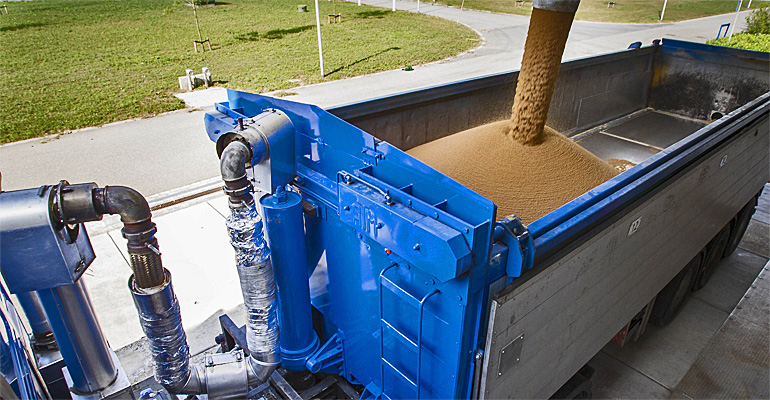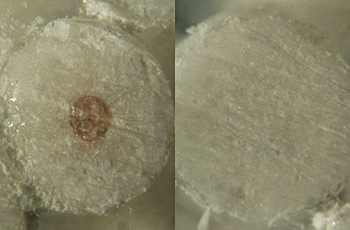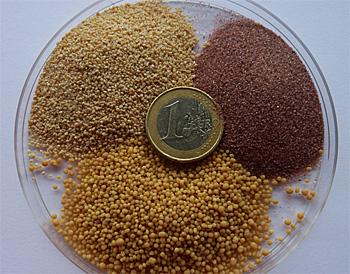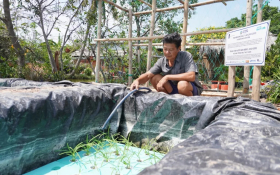Reuse of lime from drinking water softening is profitable in a wider range of products

A pilot study on lime pellets at the drinking water plant of Waternet at Weesperkarspel, the Netherlands, showed that reuse of these pellets is also economical feasible for production of carpets, paper, while glass, plastic and even for feed and food.
Lime pellets are a by-product of the softening process for drinking water for which Garnet sand is used as a seeding material. Dutch water companies recover these pellets, containing calcium carbonate, already for many years, for delivery to the fertiliser, steel and construction industries.
As part of the pilot study the Garnet sand was replaced by recovered lime from the softening process itself. This lime proved to be of a higher quality and can for instance be used in the production of carpets and, in the future, possibly also paper, white glass, plastic and feed/food.
Partners in the research project 'Marketing Dutch lime pellets' tested the production of lime pellets were Waternet, Reststoffenunie, Dunea, PWN, WML, Brabant Water and KWR.
Half of the drinking water that is produced by Dutch utilities is softened. The residual lime sludge and pellets are collectively handled (see top photo) and marketed by Reststoffenunie, a collective shared service centre of the Dutch water utilities.
 Lime pallet with (left) and without a sand nucleus.
Lime pallet with (left) and without a sand nucleus.
Calcium instead of sand nucleus
The improvement of the lime pellets requires that the sand nucleus – the seeding material – be replaced by a calcite nucleus. This creates a lime pellet that consists almost entirely of lime.
The calcite used as seeding material can, in principle, be produced from the process’ own lime pellets.
The process therefore involves the reuse of residuals, the valorisation of residuals and possible sustainability benefits, because of the reduced extraction of primary lime and transport.
The reuse of the material in drinking water production is only possible if it meets strict microbiological and chemical quality standards to safeguard drinking water quality.
 Upper right: Garnet sand; upper left: processed lime pellets (0,5 mm) for reuse as seeding material; below: residual lime pellets (1 mm).
Upper right: Garnet sand; upper left: processed lime pellets (0,5 mm) for reuse as seeding material; below: residual lime pellets (1 mm).
Good quality and operational management
Mineral raw material suppliers processed - such as dried, ground, sieved - several batches of lime pellets into seeding material. The quality of calcite throughout the supply chain was carefully measured.
The results show that the microbiological and chemical quality requirements for calcite in drinking water can be met.
The calcite produced has indeed been successfully used in several endurance tests at Waternet’s Weesperkarspel water production plant.
Life-cycle analysis
A cost-benefit analysis was also carried out, while sustainability was determined through Life-cycle Analysis. This multi-criteria analysis shows that the net returns are favourable in the case of the large-scale alternative, but that the sustainability benefits decrease as scale increases.
The smaller scale alternatives produce greater sustainability benefits, but the net returns are less favourable.
Waternet, the water utility of Amsterdam, has implemented the new concept at its Weesperkarspel water production plant, and is preparing implementation at a second plant.
This news item was originally published on the website of KWR watercycle research institute.
Read also on this website
● AIWW Aquatech 2015: Opening ceremony marks tremendous global water challenges ahead, 2 November 2015
● IWA Lisbon 2014: Practitioners address resource recovery at world water congress, 16 September 2014
● IWW/Aquatech: Vitens wins Aquatech Innovation Award 2013 with recovery process, 4 November 2013
More information
KWR watercycle research institute
Nieuwegein, the Netherlands
+31 30 60 69 756
www.kwrwater.nl
Reststoffenunie
Nieuwegein, the Netherlands
+31 30 606 9721
www.reststoffenunie.com



